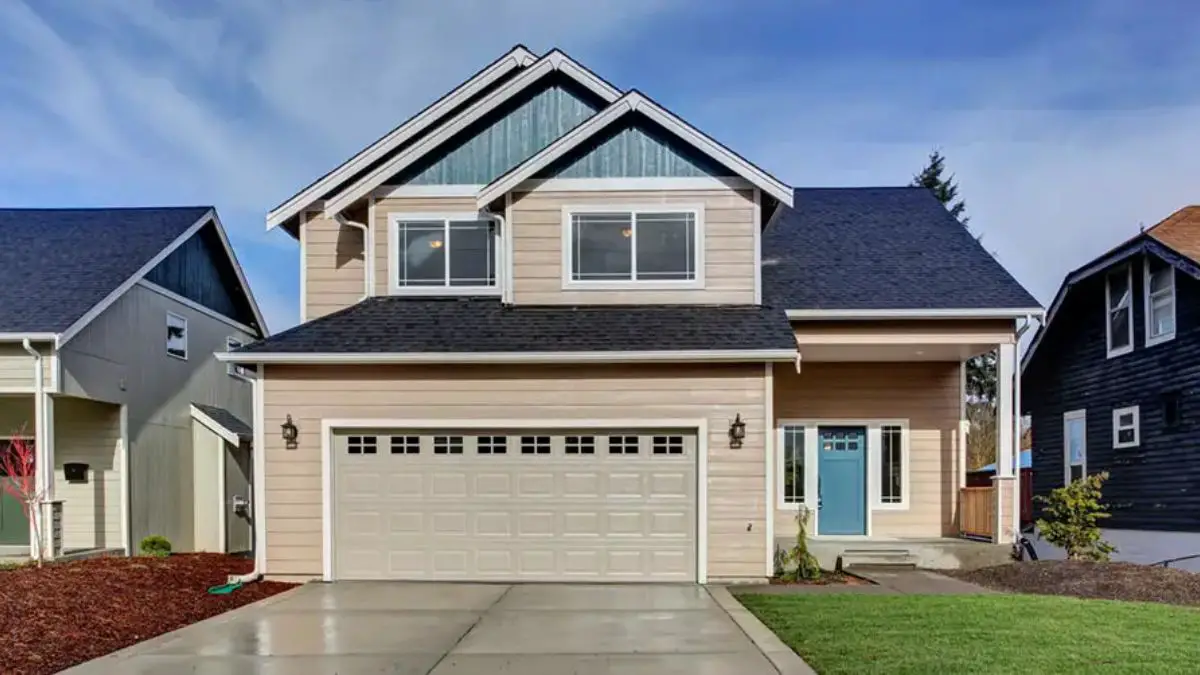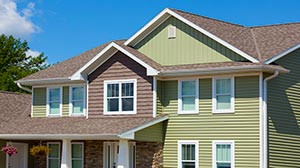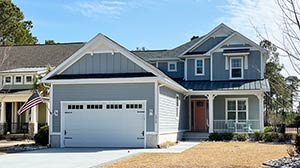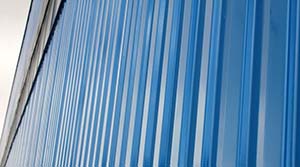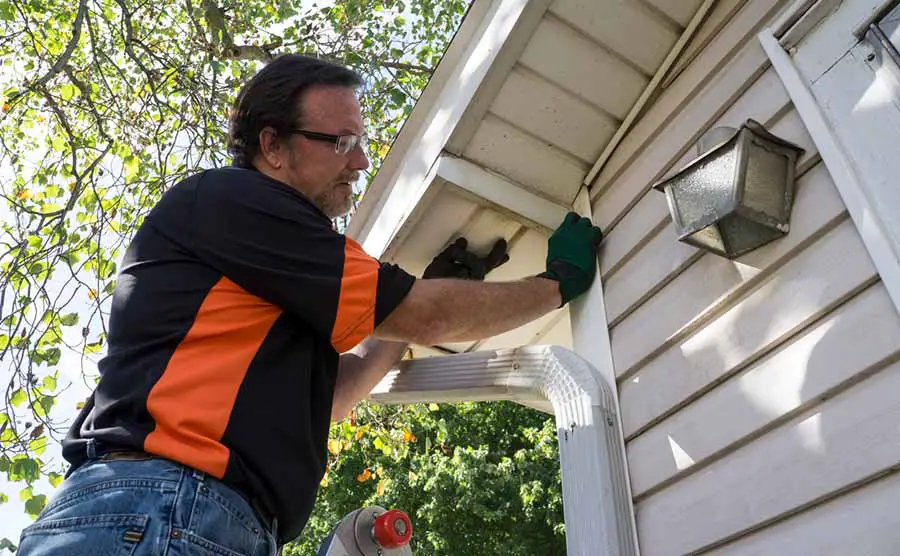
Although brick is among the most popular exterior finishes, sometimes it needs to be replaced or covered. Aged brick may come with mismatched patching, crumbling, or other unsightly conditions. If you don’t want to paint or parge your brick masonry, covering it with vinyl is an option.
Installing vinyl siding over a brick house is possible, but it can be difficult because brick does not present a smooth surface. To create a smooth surface, use furring strips to attach wooden or foam sheathing to the brick. Then, install the vinyl siding like usual per the manufacturer’s instructions.
Let’s jump right into it and go over some of the best tips and tricks for installing vinyl siding over brick.
Best Tips for Installing Vinyl Siding Over Brick
Check out our fourteen tips for installing vinyl siding over brick and compare this material to other types of siding.
1. Check the Weather Forecast
Before installing your siding, ensure that the weather will work in your favor throughout the day. Of course, it may not be possible to have a perfectly sunny and warm day on which to install your vinyl siding. However, avoiding rainfall is always preferable.
2. Handle Vinyl Siding Boxes With Care
Be careful when handling the boxes of vinyl siding while bringing them to the job site. It is best to lay the boxes flat on a solid surface supporting the entire length of the box. Doing so will reduce the risk of the siding becoming bent or otherwise damaged. While storing the boxes before use, be sure not to stack them in high piles and be wary of any nearby objects that may fall on them.
3. Include Doors and Windows in Your Measurements
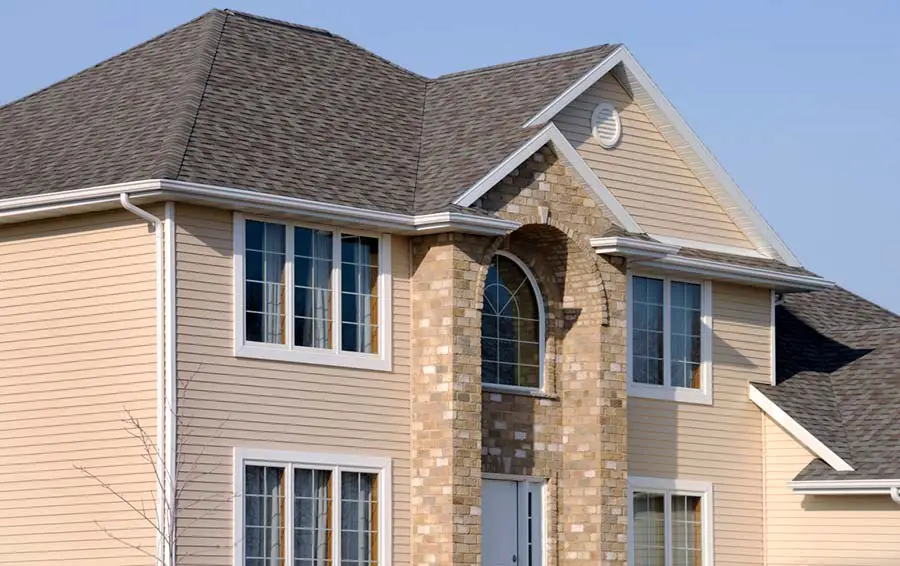
When measuring how much vinyl siding you need to do the job, make sure that you include the square footage that any doors and windows take up on your exterior. It is always good to have a bit of extra material in case of any errors with your calculations. Add 10% to your measurement to account for miscalculations and mistakes. Leftover vinyl siding can be stored away to replace damage later on.
4. Ask a Friend’s Help
Don’t attempt to install the siding by yourself. At least two people are required to hold and hang the long, flexible pieces of vinyl siding. Trying to do the job alone may result in injury or damaged materials.
5. Cut the Sidings 1/4 Inch Shorter in Cold Weather
When cutting vinyl siding to fit into a corner, be sure to make the piece a tiny bit shorter than the exact length required; a minimum of ¼ inch is best. In the warmer weather, vinyl siding will expand and buckle if it does not have adequate space to grow.
You don’t need to trim the vinyl shorter in warm weather because it will shrink when it gets cold outside.
6. Use Vertical Furring Strips
When installing vinyl siding over brick walls, you will need to attach the sheathing to vertical furring strips. These long pieces of wood are typically 1×3 inches and are anchored to the brick using concrete screws or sleeve anchors. Tapcon screws are a popular brand that you may wish to try. The sheathing is then attached to the furring strips.
7. Apply Sheathing
You need the wall surface to be as level and smooth as possible. You can achieve this by covering the brick surface with sheathing. Sheathing can be plywood, oriented strand board, or foam panels attached directly to the furring strips. To have the appropriate sturdiness required for an exterior wall, be sure to get ½ inch thickness for any sheathing type.
8. Fill Gaps with Caulk or Insulation
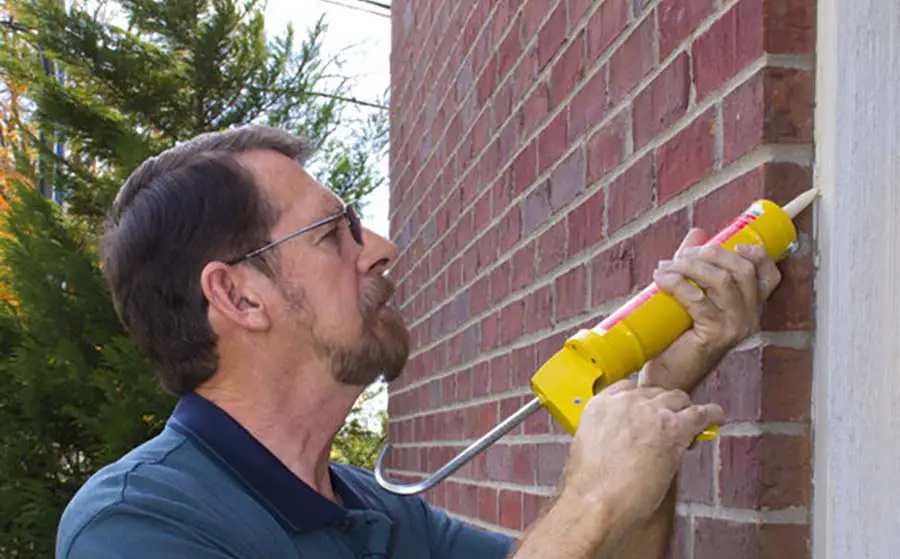
Before attaching the sheathing, be sure to apply caulking or insulation to any gaps that need filling. Once the sheathing is up, you will no longer have access to these areas.
9. Ensure that Foam Sheathing is Rigid
Select a rigid one at least ¼ to 1 inch thick when choosing foam sheathing. Be sure to avoid gaps when installing the sheathing by fitting the edges tightly together. Avoid using common nails when attaching the foam sheathing to the furring strips as they could damage the sheathing and cause leaking down the road. Use cap nails instead.
10. Use a Weather-Resistant Barrier Over Wood Sheathing
When using a wood sheathing like plywood or OSB, you should install a weather-resistant barrier like Tyvek to protect the sheathing from water intrusion behind the siding. Weather-resistant barriers help prevent water intrusion while still allowing air to pass through. Many area building codes require weather-resistant barriers, so check your area for specific requirements.
11. Smoothly Cut the Edges
If you use a circular saw to cut the vinyl siding, mount the blade facing the opposite direction. Reversing the blade will ensure a smooth cut by melting the edges. Be sure to use a fine-tooth, non-carbide tip saw blade.
12. Start at the Back
Once you are ready to start hanging the vinyl siding, start at the back of the building. The back is generally not as high in traffic, and the seams will be less conspicuous.
13. Secure a 1-Inch Overlap
Always position the factory edge (the end of the board uncut by yourself) at the seams so that you achieve a proper 1-inch overlap and you avoid future leaking or buckling.
14. Don’t Apply Caulking Over the Seams
Avoid applying caulking over the seams or overlap areas. These gaps are needed to accommodate airflow and any potential siding expansion.
15. Dispose of Your Waste Properly
Consider proper waste disposal when you finish hanging your siding. Vinyl siding is a thermoplastic material that you can recycle if the appropriate facilities exist in your area. Check with your local recycling center or waste facility. You will need to check with your local landfill to determine if they accept vinyl siding debris.
What Other Types of Siding Can You Put Over Brick?
When putting siding over brick, vinyl is not your only option. Fiber cement, metal, and wood siding are different types of siding that you can install over brick. Which one you use depends on the benefits you’re looking for, your budget, and the disadvantages you’re willing to put up with. Here is a table comparing some of the best siding types to cover brick.
| Siding Type | Cost (per sq. ft) | Pros | Cons |
|---|---|---|---|
| Vinyl | $4-$7 | Easy installation, affordable, durable, well-insulated, and low maintenance. | Allows moisture to gather underneath if not correctly installed. |
| Wood | $1-$30 | It comes in many styles, looks excellent, and is recyclable. | High maintenance is flammable and requires repainting or staining every 2-3 years. |
| Fiber Cement | $6-$11 | It can last up to 75 years, withstands extreme weather, long-term warranty, is resistant to pests, and doesn’t warp easily. | Heavy (100 square feet weighs 300 lbs.), requires professional installation, and does not insulate well. |
| Metal (tin, copper (steel, aluminum, etc.) | $1-$30 | Not prone to moisture or mold damage, easy maintenance, and is extremely durable. | Expensive, difficult to install, and difficult to replace or repair. |
Wood Siding
Wood siding is a classic exterior that never loses its charm and versatility. It is installed similarly to other sidings, using furring strips and sheathing.
It is best to clean the brick’s surface before attaching the furring strips and wood siding. After you’ve hung the wood sheathing, you should install an appropriate weather protectant.
Wood siding is available in many types of wood and styles. From pine planks to cedar shakes, the consumer has many options to choose from. It is best to get a Class A rated product for increased safety and lower insurance costs.
Fiber Cement Siding
Fiber cement siding is a popular choice for covering a brick exterior. This particular siding is made of a cement, sand, clay, and wood fiber combination and resembles other materials such as stucco, wood grain, or brick.
Hardieplank is a popular brand of fiber cement siding which you can install very similarly to vinyl.
Professionals recommend attaching 2×2 inch furring strips to the brick exterior and then covering the furring with a vapor barrier before hanging the siding, starting from the ground up.
Metal Siding
Metal siding is another option for covering a brick exterior. It is well known for being maintenance-free, durable, and long-lasting. It is installed over brick in the same manner as other types of siding, using furring strips and sheathing.
The surface of the metal is reflective and can help reduce utility costs by deflecting the sun’s rays instead of absorbing them. If your metal siding comes in large sheets, installation may be challenging and is probably a job best left for the professionals.
Final Thoughts
There are many reasons to install siding over brick. As beautiful as a brick exterior can be, sometimes the brick is too old and damaged to repair or is just not aesthetically pleasing.
Installing vinyl siding over an outer brick wall is an easy and cost-effective way to transform the exterior of your home and keep the elements outside where they belong. Lightweight and affordable, vinyl siding is a trendy choice among homeowners.
Its transportability and lower cost make vinyl siding the most practical option for the DIY’er looking to cover a brick exterior. By following the tips from the experts, you should have your old brick covered up in no time.


